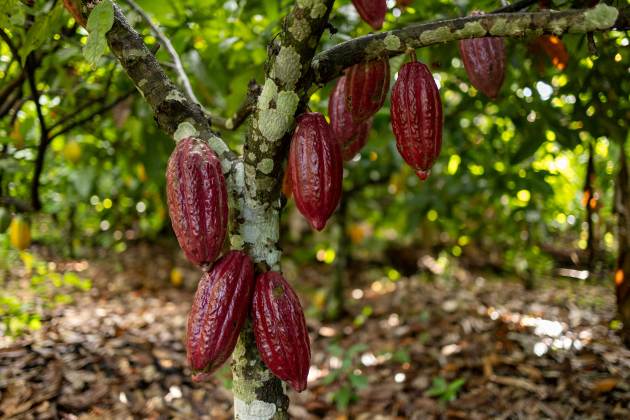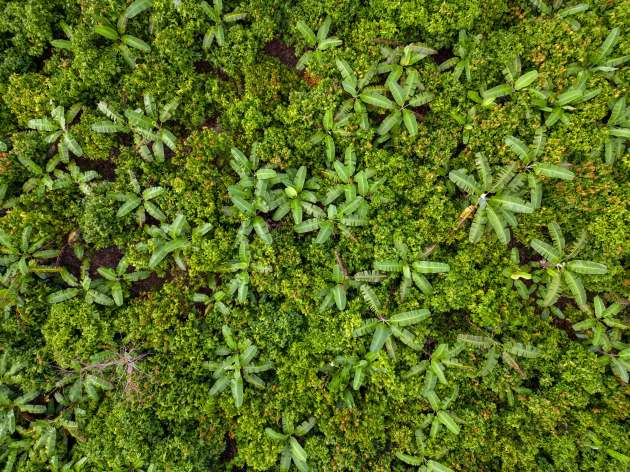Around the world, natural climate solutions, including agroforests, can help protect biodiversity and contribute to a third of the emissions reductions needed to avoid the worst impacts of climate change.
The primary cause of deforestation in the Brazilian Amazon might not be what most people think. It’s not deforestation for crops; it’s land clearing to create pastureland for livestock on family farms.
Biodiversity 101
What you need to know about biodiversity and how to protect it
In the Brazilian state of Pará, in particular, the pace of deforestation is rapid and intense, and about 40 percent of it takes place across more than 300,000 small family farms. For every 10 hectares of forest cleared by rural producers in Amazonia, 6 become pastureland, 3 are abandoned, and only 1 is converted for crops.
Unfortunately, many times when rural landholders clear forest to create pastureland they unintentionally begin a cycle of destruction. Without careful management, pastureland often degrades the soil and leaves livestock with nothing to graze on—so landowners clear more land, which then degrades the soil again, and on and on. Ultimately this cycle of degradation and destruction compromises not only the health of the forest, but landowners’ income generation and agricultural productivity.
It doesn’t have to be that way. To break that cycle, TNC has worked with rural landowners and producers in Brazil for more than 10 years on ways to create both lasting productivity of their farms and the health of the forest. Specifically, TNC supports rural producers in restoring their degraded pasturelands with cocoa-based agroforestry. And it works.

Cocoa is native to the Amazon region. Over six hundred families have already proven that it is possible to restore areas in Amazon via agroforestry systems. Now, TNC’s goal is to engage more than 3,000 producers in that journey.
Changing the Planet and Local Communities’ Lives and Livelihoods
It’s not too late to save the Amazon. One family farm at a time, in some cases.
“I thought about giving up my land,” says Rosely Dias, “until I discovered I could work with nature as my partner and not my enemy. That’s when everything changed.”
After seven years of work and partnership, Dias’s cocoa forest is a source of both pride and productivity. This forest, she says, “is not just where we earn our family’s livelihood here, but also where we strive to preserve the standing forest for our own well-being and the benefit of the planet. Through agroforestry, we get significant income from cocoa and we also harvest other crops like bananas, potatoes and oranges.”
Thanks to such diversity, Rosely Dias and her family enjoy a wide variety of fruits and produce on their table and can also offer their products in local markets. Agroforestry has shown itself to be a powerful solution for improving income and keeping more rainforest standing, as well as restoring native trees.
Become a Member
Make a lasting impact for nature when you join The Nature Conservancy
Agroforests help nature and improve the lives of rural producers. In the Brazilian Amazon, income associated with cocoa crops has shown superior financial returns to livestock farming. In an agroforestry system like Dias’s, cocoa grows alongside other crops, such as corn, cassava, açaí, andiroba, oranges and bananas, contributing to income and families’ food security. Other family farmers and rural landowners are also adopting the strategies that have been so beneficial for Dias and her family.
Agroforestry: Nature-Based Solutions with Many Benefits
Nature-based solutions, like agroforestry, are actions that improve soil management, protect and restore nature, reduce greenhouse gas emissions, and store carbon. Agrogorestry is also considered a natural climate solution because, combined with the transition away from fossil fuels, it helps tackle climate change while supporting and improving local communities’ lives and livelihoods.
In the Brazilian Amazon, there are many Rosely Dias. More than 1.4 million small rural properties extend over 70 million+ hectares. All can benefit from agroforestry systems. And the values of agroforestry are not limited to Brazil, or even Latin America. There are many different types of agroforestry all over the world, from hedgerows that feed cattle to cocoa crops interspersed with other species.
Some systems reflect ancient Indigenous and traditional practices, while others have been adapted for more industrial agriculture goals.

Agroforestry is important because of its emphasis on preventing biodiversity loss and deforestation, as well as restoring forests and protecting soil’s ability to store carbon. A TNC-led study showed how natural climate solutions, like agroforestry, can contribute to a third of the emissions reductions needed to avoid the worst impacts of climate change by 2030.
Still, despite those findings, another TNC study published in Nature Climate Change also shows that agroforestry’s climate potential is still underappreciated. Fortnately, there are things we can do to help agroforestry achieve its potential. For TNC in Brazil, the opportunity for agroforestry to help conserve and restore more forests, improve producers’ income, create more habitat for wildlife, and provide a cooler plant for all is enormous. One family farm, at a time.




Join the Discussion